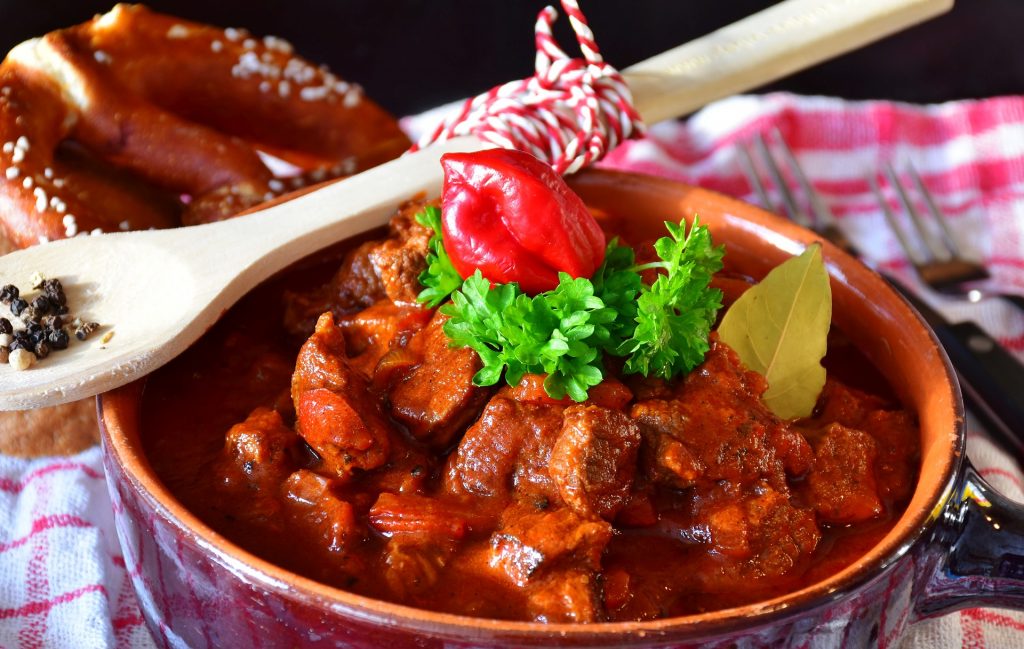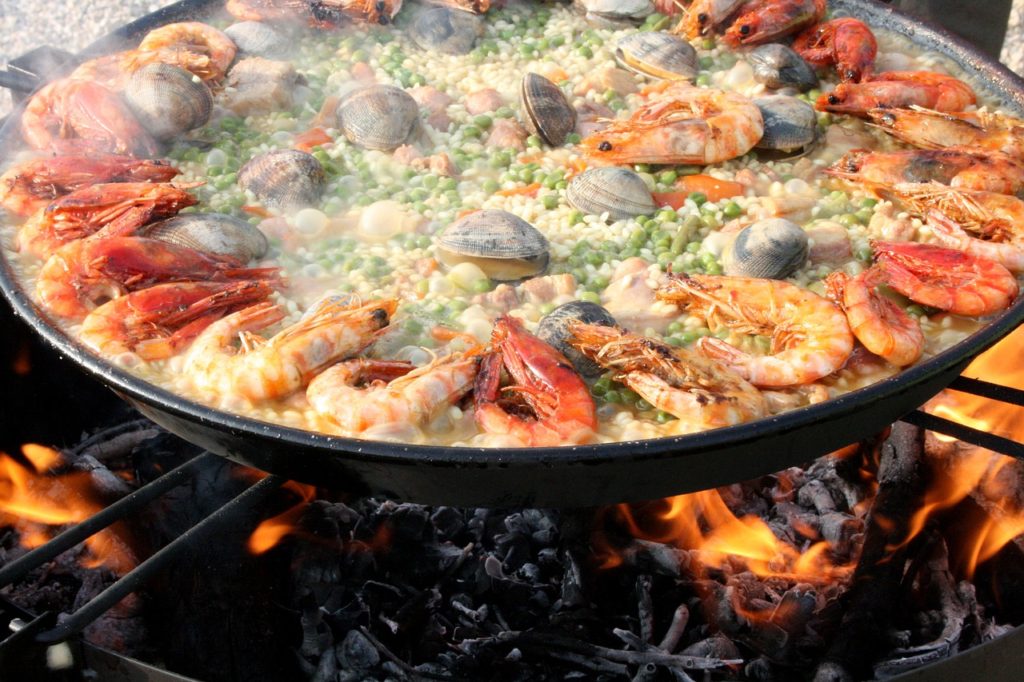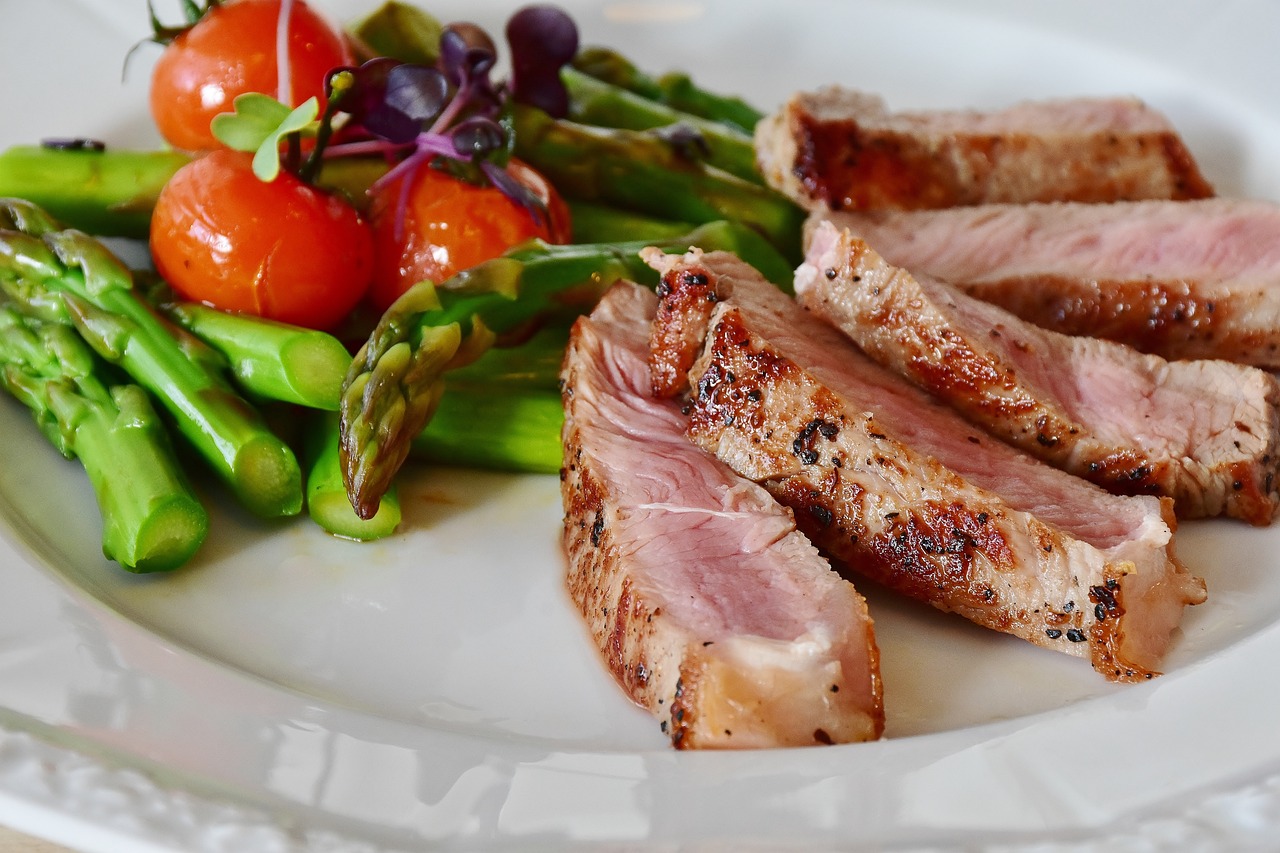Europe, an incredible continent brimming with vibrant life, rich culture, and diverse traditions, is undoubtedly a top destination for any food lover. From its charming streets to its historical landmarks, Europe offers a unique blend of experiences with its food being one of the most celebrated aspects of its identity. We’ve curated a list of Europe’s most beloved and iconic traditional foods and desserts. These dishes are a true reflection of the continent’s culinary heritage, offering everything from hearty meals to sweet indulgences. This is the perfect time to mentally and emotionally prepare yourself for the delightful journey that awaits. Immerse yourself in the flavors of Europe through recipes, stories, and inspiration and be ready to savor these unforgettable tastes in person.
4. Hungary – Goulash
Hungary’s national dish, Goulash, holds a deep cultural significance and is widely regarded as one of the most iconic and beloved dishes in the country. Known for its rich history, Goulash has transcended generations, becoming synonymous with Hungarian cuisine. The dish, traditionally a stew or soup made with beef, onions, paprika, and other spices, has been a staple in Hungarian homes and kitchens for centuries.
Interestingly, the Hungarians have several different names for this dish, each representing a slight variation or interpretation of the recipe depending on the region or even the family’s preferences. However, the term “Goulash” has become the most widely recognized and popular way to refer to it internationally. This term has been adopted because of the difficulty of the Hungarian language, which often leads to foreign speakers gravitating toward the simplified version of the word.

The roots of Goulash can be traced back to the 9th century when Hungarian shepherds would prepare a dish of meat, onions, and paprika over an open fire. This hearty meal provided the nourishment needed for long days spent working outdoors. Over the centuries, the dish evolved and became more refined, with additional ingredients such as potatoes, carrots, and various seasonings being added, depending on local preferences and available resources.
Goulash has become more than just a dish; it is a symbol of Hungarian culture and pride. It embodies the warmth and hospitality of the Hungarian people, who often serve it during family gatherings, festivals, and special occasions. The dish has also played a role in Hungary’s national identity, with various regional variations of Goulash reflecting the diverse culinary traditions found across the country.
Today, Goulash is not only a beloved national dish in Hungary but has also made its way onto menus around the world, adapted and embraced by food lovers everywhere. Whether served as a thick, hearty stew or a lighter soup, Goulash remains a comforting and flavorful representation of Hungary’s rich culinary heritage.
3. Spain – Paella
Spain’s rich and varied culinary tradition is well recognized and celebrated around the world. From the Mediterranean coast to the inland cities, the country’s cuisine is an intricate blend of flavors, regional specialties, and cultural influences. Spanish food is all about sharing, enjoying the company of friends and family, and celebrating the vibrant, diverse landscapes of Spain. Tapas, of course, is the most popular and internationally renowned aspect of Spanish cuisine. These small, flavorful dishes range from simple olives to elaborate seafood or meats, served in a variety of combinations. Tapas is not just food; it’s a way of life, a social experience that brings people together to savor different tastes and enjoy the lively atmosphere of Spain.
In addition to tapas, another hallmark of Spanish cuisine is Paella, a dish that originates from the region of Valencia. Paella is more than just a meal; it is a true representation of Spain’s diverse and colorful culinary heritage. The dish is a vibrant mixture of saffron-flavored rice combined with a variety of meats such as chicken, rabbit, or seafood, often including shellfish, squid, and mussels. Paella is traditionally cooked in a wide, shallow pan, known as a “paellera,” over an open fire, allowing the ingredients to meld together and develop rich, smoky flavors that define this iconic dish. The pan’s unique shape and design help to cook the rice evenly, ensuring that each bite is infused with the delicious combination of spices and flavors that make Paella so beloved.
Paella’s cultural significance extends beyond the borders of Valencia, having become a celebrated dish throughout Spain and worldwide. Interestingly, some linguistic experts suggest that the name “Paella” may have its origins in the Arabic word “Ba’yya,” which means leftovers. This connection highlights the long history of cultural exchange between Spain and the Arab world, as the Moors ruled much of the Iberian Peninsula from the 8th to the 15th century. The influence of Arabic cooking techniques and ingredients, such as rice, spices, and saffron, can still be seen in many traditional Spanish dishes today.

If you are surprised by the connection between Arabic and Spanish cuisine, you might be intrigued to explore Spain’s fascinating and complex history. The country’s past is filled with centuries of cultural influences, from the Romans to the Moors, each leaving their mark on the food, architecture, and traditions. In fact, many of Spain’s most beloved dishes have roots in these historical exchanges, making the country’s cuisine even more unique and diverse. For those interested in learning more about how Spain’s rich history shaped its culinary landscape, there are countless articles and books detailing this fascinating story. Understanding these historical connections can provide a deeper appreciation of Spain’s food culture and the diverse, vibrant flavors that have become so integral to the nation’s identity.
2. Portugal —Pastel de nata

Pastel de Nata is a traditional Portuguese pastry, a delightful egg tart with a crispy, flaky crust, dusted with a generous amount of cinnamon. This treat is a true classic of Portuguese cuisine, beloved for its simple yet delicious flavor. To achieve the perfect Pastel de Nata, the filling is crucial—it should strike the ideal balance, not too sweet, with no additional flavorings, allowing the natural taste of the custard to shine. The key to its appeal lies in this delicate balance, making it a treat that satisfies without overwhelming the palate.
The quintessential way to enjoy this iconic pastry is the Portuguese way—paired with a warm, aromatic cup of coffee. The rich, smooth coffee complements the sweet and creamy filling, creating a harmonious blend that elevates the entire experience. While many bakeries across Portugal serve Pastel de Nata, one stands out for its centuries-old tradition of crafting the perfect version: Pastéis de Belém.
Pastéis de Belém, located in the heart of Lisbon, has been serving its famous Pastel de Nata since 1873. The bakery is legendary, not only for its high-quality pastries but also for the secrecy surrounding its recipe. Rumor has it that the family chefs at Pastéis de Belém never travel on the same plane together to ensure the “unwritten secret recipe” is never lost. This extraordinary level of caution adds an air of mystique to the bakery, heightening the anticipation and intrigue surrounding the famed pastry.
If you ever find yourself in Lisbon, a visit to Pastéis de Belém is highly recommended. The bakery has become an essential stop for both locals and tourists alike, who line up for a taste of these legendary egg tarts. Given the extraordinary efforts to preserve the recipe and the centuries of tradition behind it, you might wonder if it truly lives up to the hype. A wild guess? It undoubtedly does! The experience of savoring a freshly baked Pastel de Nata at Pastéis de Belém is one that’s worth every bit of the fuss and is sure to leave you craving more.
1. France — Châteaubriand

This elegant and refined dish is known as Châteaubriand, named after the renowned French author, diplomat, and statesman, François-René, Vicomte de Chateaubriand. It is widely regarded as one of the most luxurious and costly items you might come across on any fine dining menu. The name evokes a sense of sophistication, and the dish certainly lives up to its reputation as a high-end culinary experience.
Interestingly, the term “Châteaubriand” doesn’t just refer to the beef itself but also encompasses the specific technique used to prepare it. This method involves grilling or roasting a thick, premium cut of beef tenderloin, typically one of the most tender and sought-after cuts of meat. The goal is to cook it to absolute perfection, ensuring that it remains incredibly tender, juicy, and brimming with rich, savory flavor. The preparation of Châteaubriand requires a high level of skill and precision, as it is often cooked to order, allowing the chef to maintain the perfect texture and taste.
The technique involves carefully monitoring the cooking process, as the cut of beef is thick and demands a delicate balance between achieving a crisp, caramelized exterior and a tender, melt-in-your-mouth interior. The process is often done over an open flame or in the oven, depending on the chef’s preferred method, with the goal of enhancing the natural flavors of the meat. The result is a luxurious and perfectly cooked piece of beef that is flavorful and extraordinarily tender, making it a true indulgence for any meat lover. Preparing Châteaubriand is as much about the method as it is about the quality of the beef, and when done right, it can create a dish that’s both visually stunning and an unforgettable culinary experience.
Châteaubriand has a rich history that adds to its allure. Its origins are both intriguing and fascinating, deeply intertwined with the culinary evolution of France. The dish was first created in the early 19th century, and its association with François-René, the Vicomte de Chateaubriand, has cemented its place in the world of haute cuisine. The history of this dish, rooted in French aristocracy and culinary tradition, only enhances its prestige, making it a dish that not only satisfies the taste buds but also offers a glimpse into the grandeur of French dining culture. The Châteaubriand is more than just a meal; it is a symbol of culinary excellence and history, bringing together both flavor and tradition in a single, unforgettable experience.
Europe, a remarkable continent teeming with vibrant life, diverse cultures, and a rich tapestry of traditions, is unquestionably one of the most sought-after destinations for food enthusiasts. The continent’s culinary scene is as diverse as its landscapes, offering an array of flavors, techniques, and ingredients that reflect its fascinating history and cultural evolution. From the Mediterranean shores to the heart of Eastern Europe, every region offers unique dishes that capture the essence of local life, making it a dream destination for anyone passionate about food.
Whether you’re savoring fresh pasta in Italy, enjoying rich pastries in France, or indulging in hearty stews from Central Europe, Europe has something to delight every palate. Each country and region within the continent brings its own distinct culinary identity, influenced by centuries of history, migration, and trade. The opportunity to experience these diverse flavors and cooking styles makes Europe an unparalleled destination for those who truly appreciate the art of gastronomy. Whether you’re a connoisseur of fine dining or a fan of street food, Europe’s rich food culture offers endless possibilities to explore and savor.






